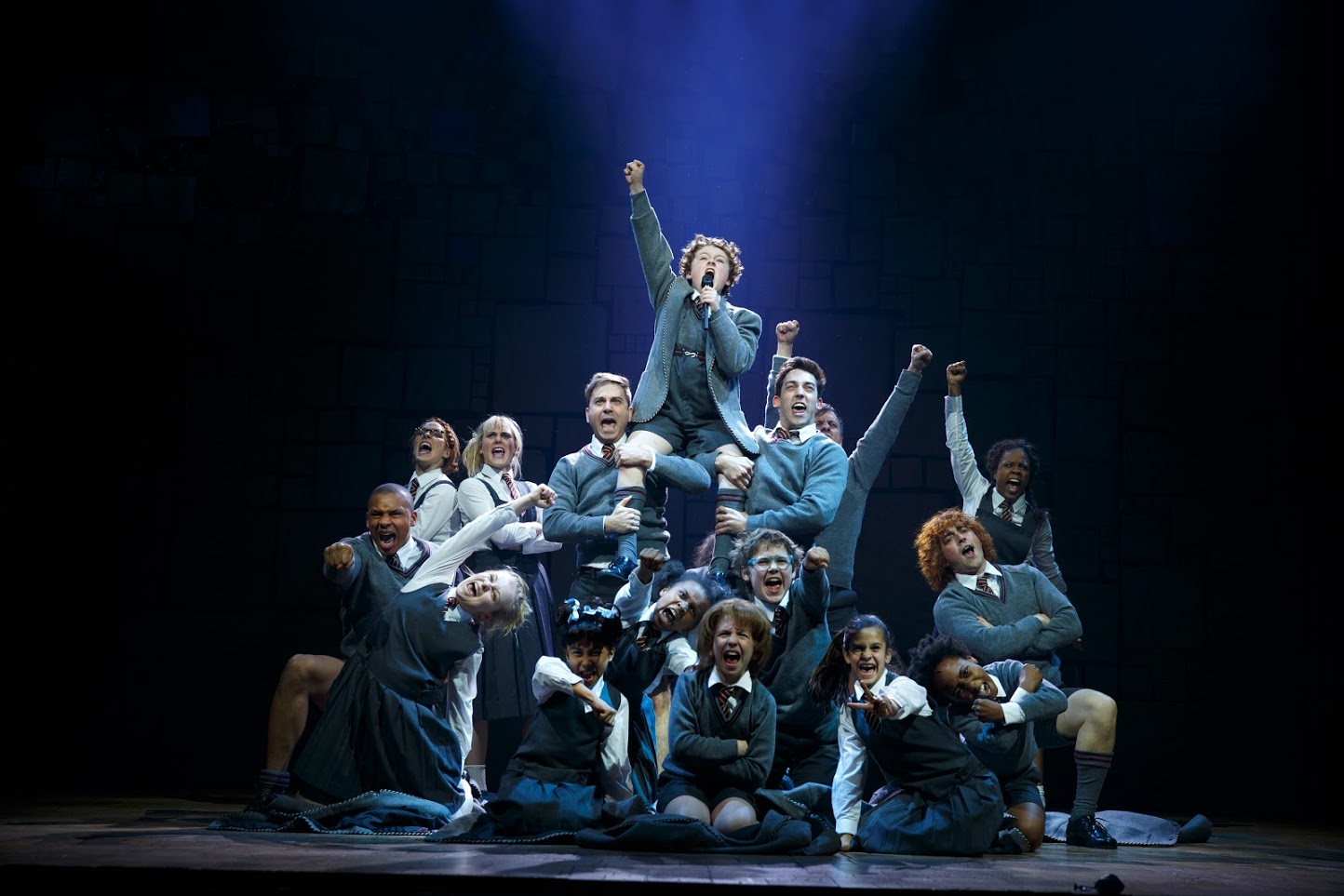National Theatre live broadcasts in movie theaters (like Cedar Lee Theatre) succeed where recent live TV presentations of musicals fail
By Bob Abelman
“All the world’s a stage.”
– From the 2006 film “As You Like It”
New York magazine called it a “tasteless bombardment” and The Hollywood Reporter referred to it as “musical diarrhea.”
Despite its box office success — $148 million domestic and $283 million worldwide — most critics of the film version of the Broadway musical “Les Misérables” wrote disparaging reviews.
They haven’t been much kinder to NBC’s recent efforts to bring live theater back to the small screen — where it was a mainstay in the 1950s — with recent broadcasts of “The Sound of Music” (“As lifeless as those alpine backdrops,” Variety), “Peter Pan” (“Fails to take flight,” NY Daily News) and “The Wiz” (“A hot mess,” The Daily Beast).
Most of the negative commentary revolved around the intrusion of the camera when going from stage to screen, which The New York Times referred to as the “inability to leave any lily ungilded, to direct a scene without tilting or hurtling or throwing the camera around.”
The Times had a similar problem with the more recent Fox television production of “Grease,” which “wasn’t remotely theater. Good theater is spine-tingling; ‘Grease: Live!’ was spectacle.”
And this isn’t just a problem with musicals, for the history of filmed theater in general doesn’t have a great track record in this regard. Have you seen “Spinning Into Butter” (“A movie taking a fairly interesting premise … and, through sheer incompetence, turning it into an unwatchable mess,” The Washington Times)?
The National Theatre in London attempted to bridge this chasm in storytelling modalities by taking a different approach to adapting stage productions for the big screen, called NT Live.
Inspired by the Metropolitan Opera, which pioneered the concept in 2006, the National Theatre launched a live broadcast of its 2009 production of Jean Racine’s tragedy “Phèdre” to local cinemas. It did so with the intention of capturing the integrity of the stage work and replicate, as much as possible, the experience of actually sitting in the theater watching a live performance. The NT Live broadcast was seen by over 50,000 people, which doubled in one night the audience for the play’s entire three-month run.
Since then, NT Live has broadcast live more than 20 productions being performed in front of an in-house audience at the National Theatre, and on occasion other theaters in the UK, the U.S. and elsewhere. To date, more than 4 million people have experienced its broadcasts in more than 1,100 venues around the world, including the Cedar Lee Theatre in Cleveland Heights.
Marketing researchers have found that, far from cannibalizing audiences of local professional theater, NT Live has on average grown audiences for local theaters in London and reported a 6.4 percent increase in local theater attendance in areas nearest an NT Live screening in the year following the broadcasts.
Five to eight high-definition cameras, including one that offers gentle tracking shots, are strategically positioned throughout the theater so as to be unobtrusive in their presence and relatively inconspicuous in their coverage. Shots from various camera positions are subtly cut live into a single feed by a camera director, giving the cinema audience access to the best seat in the house at all times.
The theater itself is transformed into something of a live TV studio, and while adjustments are made for lighting, sound and makeup, few changes are made in staging in order to preserve the integrity of the original theatrical design and transpose the stage picture to the screen as effectively as possible. At most, the camera offers heightened intimacy and accentuates the nuances of the actors’ performances and the stage director’s vision. And the actors are always reminded that they are doing a stage performance, not making a movie.
Satellites allow the productions to be filmed live and simulcast across the UK and Europe. In the U.S. and Canada, the majority of venues show it on the same day as the live filming while others in Australia, New Zealand, South Africa, Mexico, India, Russia, Japan, China, Sweden and South America show it on a delayed basis, within a few weeks of the original broadcast.
The National Theatre produces about 25 new productions each year that vary from Shakespeare and classics to new plays, so the goal of NT Live is to offer a microcosm of its repertoire and showcase the diversity of what they do.
“Early on, we encountered skepticism about how (the live broadcast) would work because most people, and I mean myself included, believe that theater when it’s filmed becomes very static, very deadening, and it’s so the antithesis of the art form,” executive producer David Sabel recalls on the NT Live website.
Not anymore. CV
On Screen
WHAT: NT Live broadcast of Christopher Hampton’s “Les Liaisons Dangereuses”
WHEN: 11 a.m. Feb. 28 and 7 p.m. March 2
WHAT: NT Live broadcast of Shakespeare’s “As You Like It”
WHEN: 7 p.m. March 23 and 11 a.m. March 27
WHERE: Cedar Lee Theatre, 2163 Lee Road, Cleveland Heights
TICKETS & INFO: $20. Call 216-321-5411 or visit clevelandcinemas.com.
Bob Abelman covers theater and cultural arts for the Cleveland Jewish News. Follow Bob at Facebook.com/BobAbelman.3.
Originally published in the Cleveland Jewish News on Jan. 29, 2016.
Lead image: Paul Chahidi as Jacques in The National Theatre production of “As You Like It” in London. PHOTO | Johan Persson











